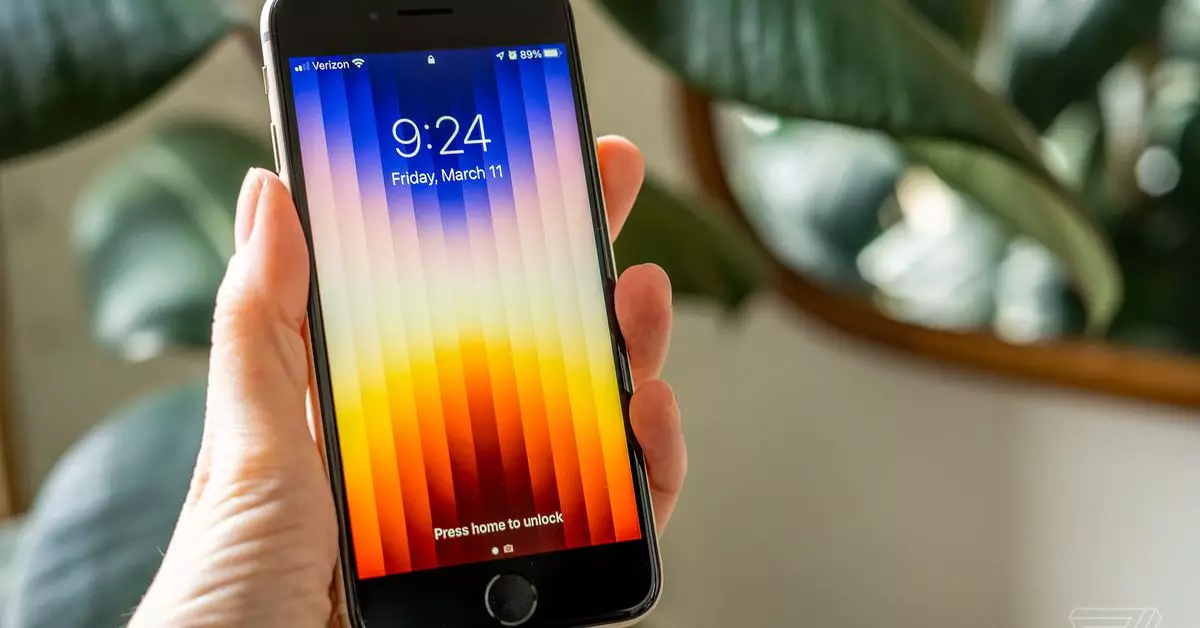In the rapidly changing landscape of smartphone technology, the value of midrange devices is often overlooked amidst the hype of flagship releases. With the iPhone SE, Apple has long positioned itself as a player in this space. However, recent offerings from Android competitors raise the question: can Apple maintain its midrange relevance, or is it time for a significant overhaul? This article evaluates the current state of the iPhone SE, contrasts it against notable Android alternatives, and speculates on the future of Apple’s midrange strategy.
Since its debut in 2016, the iPhone SE has catered to consumers seeking an affordable iPhone with desirable features. The initial model, equipped with the A9 chip, successfully struck a balance between performance and price, retailing for $399. Over the years, it has seen minimal updates, contributing to a sense of stagnation that has made it increasingly challenging to recommend, particularly with the latest third-generation model starting at $429.
Despite a solid construction boasting dust and water resistance, the SE has critical shortcomings that cannot be ignored. Users are met with a cramped display, limited storage starting at just 64GB, and an outdated LCD screen paired with hefty bezels. Most glaring, however, is the lack of a night mode, which severely limits photographic capabilities in low-light situations. As we approach 2024, these drawbacks undermine the phone’s value proposition in a market that has evolved significantly since the SE’s original release.
Android manufacturers have adeptly filled the gap of well-built, feature-rich midrange devices that appeal to a wide audience. The Google Pixel 8A exemplifies this trend perfectly. Priced at $499, it offers an OLED screen, an exceptional camera, and an IP67 rating—capabilities that make it compelling compared to the iPhone SE. Moreover, it boasts seven years of OS updates, ensuring that buyers receive long-term support and security improvements.
Samsung also remains competitive with its Galaxy series of midrange phones, particularly the Galaxy A35, which provides numerous features, including an OLED display and the same IP67 rating as the 2022 SE for $399. These devices not only offer modern aesthetics but also deliver performance that can outpace the aging iPhone SE, leading to significant concerns about Apple’s relevance in this segment.
Despite the current shortcomings of the iPhone SE, there are whispers of a potential fourth-generation model slated for release in 2025, sparking optimism among loyal Apple users. If the rumors hold true, this upcoming iteration may incorporate a modern design, potentially an OLED display, and improved storage options—transforming it into a more competitive choice in the midrange sector.
A base storage increase would be essential, as the current 64GB offering feels inadequate in a technology landscape where users demand more space for content and applications. Additionally, the ability to run on advanced processing power and RAM to facilitate features like enhanced photography or AI capabilities could make the SE a substantial player once again.
In examining Apple’s history, an approach similar to what was used in upgrading the Mac Mini could offer guidance. The latest M4-powered Mac Mini exemplifies the value of simple yet effective design—providing the necessary features without overcomplicating the experience. Apple’s recent emphasis on optimizing upgrades by trimming extraneous offerings could be successfully translated to the iPhone SE.
By focusing on user essentials with fewer unnecessary features, Apple could create a midrange smartphone that appeals to a larger audience. By potentially removing certain flagship features like the Action Button or Dual Camera setup, Apple could streamline production while still delivering a superior product to budget-conscious consumers who desire the Apple experience without a hefty price tag.
In a market where Android competitors are thriving in the midrange space, it is critical for Apple to heed the prevailing trends and adjust its strategy accordingly. The iPhone SE as it stands lags significantly behind emerging contenders, but with strategic refinements, its fourth generation could signal a return to form. If Apple capitalizes on its strengths, listens to user feedback, and offers a device that meets the current technological standards while remaining reasonably priced, it can secure a robust foothold within the midrange sector once again. The evolution of the iPhone SE is not just about refining a product—it could represent a broader shift in Apple’s approach to delivering value in an increasingly competitive landscape.


Leave a Reply